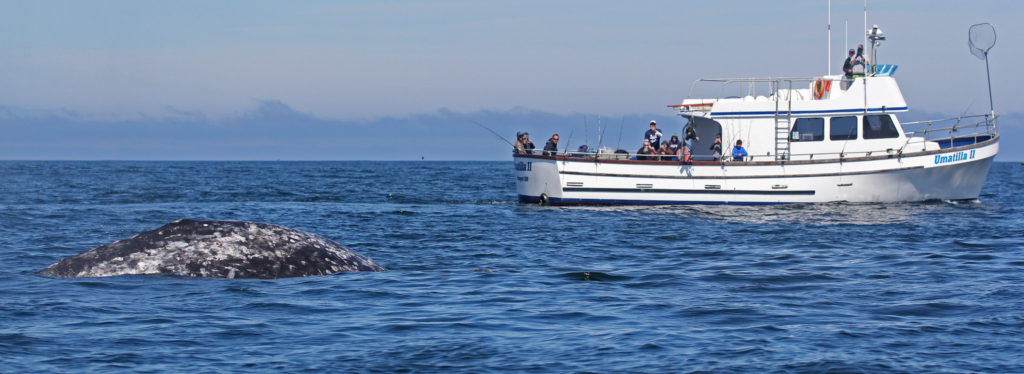
For the first time in two years, Oregon State Parks will have staff and volunteers at 17 locations along the Oregon coast for its “Whale Watch Week” starting Wednesday through Sunday, Jan. 1.
Park rangers and volunteers will be at the official sites – although experienced whale watchers can use any unobstructed view, of course — along the Oregon Coast for five days to help people spot gray whales migrating south through Oregon’s waters. The trained volunteers will be stationed at most of the sites to answer questions, share information and to help spot whales.
A map of volunteer-staffed sites is available on the Oregon State Parks website.
“We really enjoy getting folks out to the coast for Whale Watch Week,” said park ranger Peter McBride in a news release from Oregon State Parks. “It’s something that Oregon State Parks has been doing for more than 40 years now, and we’re really glad to be able to bring it back in person.”
The yearly event was canceled during the pandemic.
Over the next several weeks, an estimated 18,000 gray whales are expected to swim through Oregon’s waters during their annual migration south to warm calving lagoons near Baja, Mexico. The end of December is the peak time for their migration with roughly 30 whales passing by per hour.
Spring watching begins in late March as the gray whales return north on their way towards Alaska. The first surge swims past Oregon around the end of March and lasts until June.
In Depoe Bay, the Whale Watching Center will be open 10 a.m. to 4 p.m. Wednesday through Sunday during Whale Watch Week. Visitors can experience interactive whale exhibits and panoramic ocean views.
Here are the locations in north Lane and Lincoln counties where volunteers will be available to help catch a glimpse of the whales:
- Heceta Head Lighthouse
- Cape Perpetua Turnout
- Yachats State Park
- Boiler Bay State Scenic Viewpoint
- Depoe Bay, whale watching center
- Rocky Creek State Scenic Viewpoint
- Cape Foulweather

Whale spotting tips
There are four things to be on the lookout for when whale watching, according to Oregon State Parks:
The blow: Gray whales usually surface every 20 seconds as they swim but will often stay under for 3 to 5 minutes when they are eating. If they have been down for 5 minutes, they usually blow five times when they surface to replenish their oxygen supply. The blow, or spout, shoots nearly 12 feet high and expels 400 liters of air in a single blast. The whales take a few breaths at the surface then dive again. If they are frightened, they can stay down for 30 minutes, hiding on the bottom or traveling great distances.
The breach: The ultimate in whale sightings is a breach. This is when a whale launches itself out of the water in a spectacular show of power and grace. Scientists aren’t sure why whales breach. Possibly they do it to remove parasites, communicate with each other, or maybe it’s just for fun. Gray whales aren’t known for breaching nearly as often as Humpback whales, but young gray whales seem to be the most common breachers along the Oregon Coast.
The spyhop: Whales are intelligent and curious and are often seen “spyhopping,” or lifting their heads above the surface of the water. They like to rise out of the water to get a better sense of their surroundings. During the summer, gray whales have been known to spyhop regularly, especially when local tour boats are near.
The dive: A deep dive, also known as sounding or fluking, happens when a whale lifts its tail flukes out of the water. This helps propel the whale downward at a steep angle to the bottom, where they feed on zooplankton and amphipods. After the flukes disappear under the water, the turbulence of the dive will cause a circle of smooth water, known as a fluke-print.



I love these whales, we’ve drove from Idaho a few times in the spring to see the great gray whale. I would love to go again but finances and health issues have not been in my favor to do so. Thank you for the fabulous articles and photos of these beautiful animals. They give me a way to see them.